Filter by
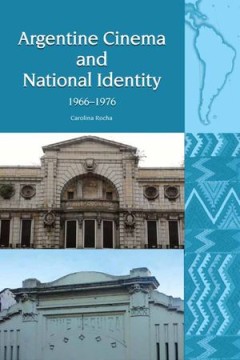
Argentine Cinema and National Identity: 1966-1976
Argentine Cinema and National Identity covers the development of Argentine cinema since the late 1950s to the mid-1970s, a period that has been understudied. This essential cultural history delves on the dialect tradition versus modernity that was in place during those years and also comprises an examination of the political economy of film production as well as the different laws, including th…
- Edition
- -
- ISBN/ISSN
- 9781786940544
- Collation
- -
- Series Title
- -
- Call Number
- 700 ROC a

Creating a Diverse and Inclusive Organizational Culture
Students in this course will learn organizational best practices to implement diversity, equity, inclusion, and belonging in the workplace. Students will evaluate laws and policies that apply to diversity and inclusion. Students will also build cultural competencies to foster employee recruitment, motivation, satisfaction, and retention. Additionally, students will analyze the leadership skills…
- Edition
- -
- ISBN/ISSN
- -
- Collation
- -
- Series Title
- -
- Call Number
- -

Art beyond Borders: Artistic Exchange in Communist Europe (1945–1989)
During the Cold War the exchange of artistic ideas and products united Europe’s avant-garde in a most remarkable way. Despite the Iron Curtain and national and political borders there existed a constant flow of artists, artworks, artistic ideas and practices. The geographic borders of these exchanges have yet to be clearly defined. How were networks, centers, peripheries, scales, and distance…
- Edition
- -
- ISBN/ISSN
- 9789633860830
- Collation
- -
- Series Title
- -
- Call Number
- 700 ART a
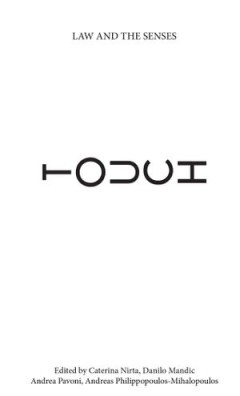
Touch
Described by Aristotle as the most vital of senses, touch contains both the physical and the metaphysical in its ability to express the determination of being. To manifest itself, touch makes a movement outwards, beyond the body, and relies on a specific physical involvement other senses do not require: to touch is already to be active and to activate. This fundamental ontology makes touch th…
- Edition
- -
- ISBN/ISSN
- 9781912656660
- Collation
- -
- Series Title
- -
- Call Number
- 700 TOU t
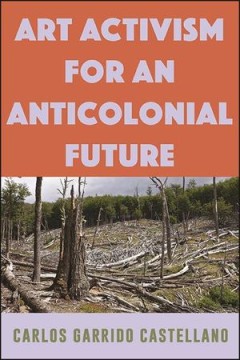
Art Activism for an Anticolonial Future
Analyzing the confluence between coloniality and activist art, Art Activism for an Anticolonial Future argues that there is much to gain from approaching contemporary politically committed art practices from the angle of anticolonial, postcolonial, and decolonial struggles. These struggles inspired a vast yet underexplored set of ideas about art and cultural practices and did so decades before …
- Edition
- -
- ISBN/ISSN
- 9781438485744
- Collation
- -
- Series Title
- -
- Call Number
- 700 CAS a
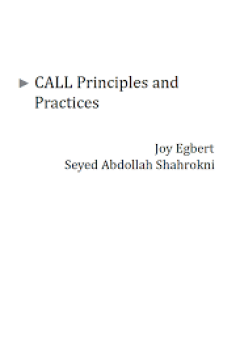
CALL Principles and Practices
Overview: Since the first version of this book came out in 2005, the field of computer-assisted language learning (CALL) has grown and changed. This update is the result of some of those changes. Our intent is to place pedagogical goals before technologies, as the literature advises but is not always followed in classrooms. In revising this book, as in the original, we assume that good teachers…
- Edition
- -
- ISBN/ISSN
- -
- Collation
- -
- Series Title
- -
- Call Number
- -
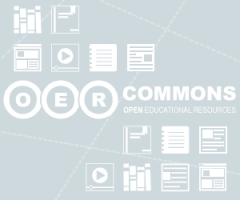
Digital Foundations
This book was written by two artist educators who teach digital art and design studio foundation classes. While teaching classes that take place in software laboratories, we noticed that many of our students expected to learn to use software, but gave little consideration to aesthetics or art and design history. A typical first day question is, "Are we going to learn Photoshop in this class?" T…
- Edition
- -
- ISBN/ISSN
- -
- Collation
- -
- Series Title
- -
- Call Number
- -
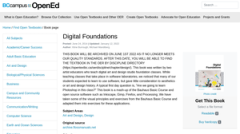
Digital Foundations
This book was written by two artist educators who teach digital art and design studio foundation classes. While teaching classes that take place in software laboratories, we noticed that many of our students expected to learn to use software, but gave little consideration to aesthetics or art and design history. A typical first day question is, "Are we going to learn Photoshop in this class?" T…
- Edition
- -
- ISBN/ISSN
- -
- Collation
- -
- Series Title
- -
- Call Number
- -
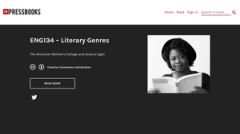
ENG134 – Literary Genres
The American Women's College and Jessica Egan
- Edition
- -
- ISBN/ISSN
- -
- Collation
- -
- Series Title
- -
- Call Number
- -

Voice Class
The rule of punctuation is simple. In the text of the song, if there is a punctuation mark, breathe or pause there. In written music, punctuation marks, such as a comma or period, are prominent throughout the music. When preparing a piece from a recording, research the sheet music to find the punctuation. Unfortunately, most websites that offer the lyrics to the song do not include the pu…
- Edition
- -
- ISBN/ISSN
- -
- Collation
- -
- Series Title
- -
- Call Number
- 790 ROL v
 Computer Science, Information & General Works
Computer Science, Information & General Works  Philosophy & Psychology
Philosophy & Psychology  Religion
Religion  Social Sciences
Social Sciences  Language
Language  Pure Science
Pure Science  Applied Sciences
Applied Sciences  Art & Recreation
Art & Recreation  Literature
Literature  History & Geography
History & Geography